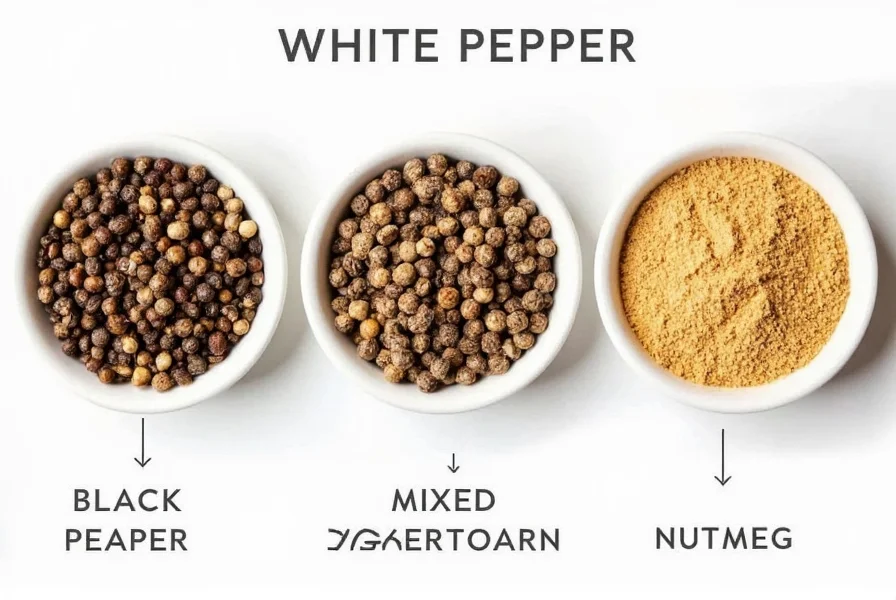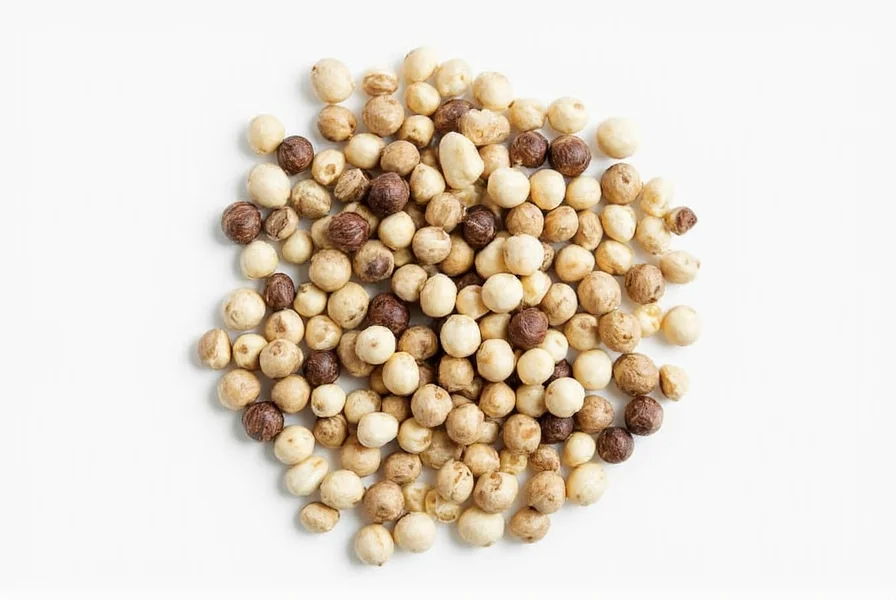When your recipe calls for white pepper but your spice rack is running low, knowing the right substitute can make or break your dish. White pepper offers a distinct flavor profile—milder than black pepper with earthy, slightly floral notes—and its pale color makes it ideal for light-colored sauces, soups, and mashed potatoes where black specks would be visually unappealing.
Why White Pepper Matters in Cooking
White pepper comes from the same plant as black pepper (Piper nigrum), but undergoes different processing. The outer fruit layer is removed before fermentation, resulting in a smoother, less complex flavor with less pungency. Chefs often choose it for:
- Creamy sauces like béchamel or Alfredo where visual appeal matters
- Light-colored soups and purees
- Asian cuisine where its subtle heat complements delicate flavors
- Recipes requiring pepper flavor without visual distraction
Top 5 White Pepper Substitutes Ranked by Effectiveness
Not all substitutes work equally well in every application. Here's how common alternatives compare for different culinary needs:
| Substitute | Flavor Profile | Best For | Ratio to Replace | Limitations |
|---|---|---|---|---|
| Freshly ground black pepper | Sharper, more complex, slightly piney | Most savory dishes, stews, roasted meats | ⅔ amount of white pepper called for | Visible specks in light dishes |
| Mixed peppercorns | Balanced heat with floral notes | General cooking, sauces, marinades | Equal amount | Slight color variation |
| Black pepper + pinch of cayenne | Similar heat level, more complex | Creamy sauces, soups, mashed potatoes | ½ black pepper + tiny cayenne pinch | Requires careful measurement |
| Freshly grated nutmeg | Warm, slightly sweet, aromatic | Cream sauces, béchamel, purees | ¼ tsp nutmeg per ½ tsp white pepper | Different flavor profile |
| Ginger powder | Subtle warmth with citrus notes | Asian dishes, light soups | ⅓ amount of white pepper | Distinct ginger flavor |
When to Choose Which Substitute
The right white pepper alternative depends on your specific recipe and desired outcome. Understanding these nuances helps you make informed substitutions:
For Creamy Sauces and Light-Colored Dishes
When appearance matters most—as in Alfredo sauce, béchamel, or mashed potatoes—visible black specks ruin the aesthetic. Your best options include:
- Black pepper with cayenne trick: Use half the amount of freshly ground black pepper plus a tiny pinch of cayenne to match white pepper's heat level without visible specks
- Nutmeg alternative: Provides similar warmth with no color disruption (use sparingly as nutmeg has a distinct flavor)
- White peppercorn soak: If you have whole white peppercorns but no ground, soak ½ teaspoon in warm water for 10 minutes then blend smooth
For Asian Cuisine and Delicate Flavors
Many Asian recipes specify white pepper for its unique flavor profile that complements rather than dominates. Try:
- Ginger powder substitute: Offers similar warmth with complementary Asian flavor notes (ideal for wonton soup or dumpling fillings)
- White pepper and Szechuan peppercorn blend: Creates complexity while maintaining visual appeal
- Coriander powder: Provides mild warmth with citrus notes that work well in many Asian applications
For General Cooking and Robust Dishes
When visual appearance isn't critical, these straightforward alternatives work well:
- Freshly ground black pepper: Use about 30% less than the white pepper amount called for (white pepper is slightly stronger)
- Mixed peppercorns: Provides balanced flavor complexity without overwhelming the dish
- Pink peppercorns: Offer similar heat level with subtle floral notes (use cautiously as they can be slightly soapy)
Common Substitution Mistakes to Avoid
Even experienced cooks make these errors when replacing white pepper:
- Using pre-ground black pepper: Loses potency quickly—always grind fresh for best results when substituting
- Ignoring heat differences: White pepper is slightly hotter than black—adjust quantities accordingly
- Overcompensating with other spices: Adding too much cayenne or ginger creates imbalance rather than substitution
- Substituting in sweet applications: White pepper works in some sweet dishes (like chocolate), but alternatives may not translate well
Pro Tips for Perfect Substitutions
Professional chefs use these techniques when white pepper isn't available:
- The bloom test: For creamy sauces, bloom your substitute spice in a tablespoon of the recipe's fat (butter or oil) before adding to maintain even distribution
- Delayed addition: Add substitutes later in cooking than you would white pepper, as some alternatives lose flavor more quickly with prolonged heat
- Taste and adjust: Always taste after adding substitute and wait 5 minutes before adjusting—pepper flavors develop over time
- Combine substitutes: For complex dishes, try a 50/50 blend of nutmeg and reduced black pepper for best results

When No Substitute Will Do
Some recipes truly require white pepper's unique characteristics. These situations include:
- Classic French béchamel where visual purity matters
- Certain Chinese hot and sour soups where white pepper's specific flavor is integral
- High-end plating where visual presentation is critical
- Recipes developed specifically around white pepper's flavor profile
In these cases, consider making a special trip to a well-stocked grocery store or spice merchant. Many supermarkets now carry white pepper in the international or gourmet spice section, and online retailers offer high-quality options that ship quickly.

Building Your Pepper Knowledge
Understanding pepper varieties helps you make better substitutions. While black and white pepper come from the same plant, their processing creates distinct characteristics:
- Black pepper: Made from unripe fruit, sun-dried with outer layer intact—more complex flavor with pine and floral notes
- White pepper: Made from ripe fruit with outer layer removed—smoother, earthier, slightly fermented notes
- Green pepper: Unripe fruit preserved in brine—fresh, herbal flavor
- Pink pepper: From a different plant family—softer heat with floral notes
This knowledge helps you select appropriate substitutes based on which flavor characteristics matter most for your dish.











 浙公网安备
33010002000092号
浙公网安备
33010002000092号 浙B2-20120091-4
浙B2-20120091-4